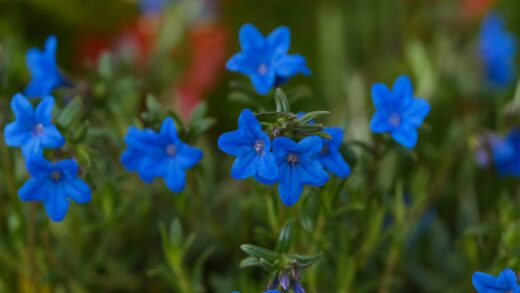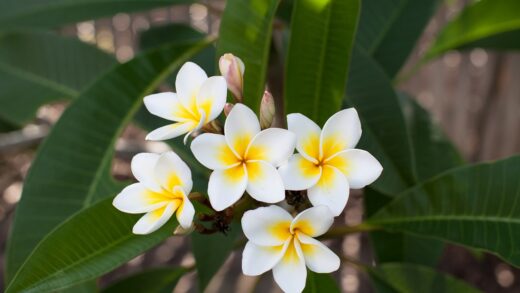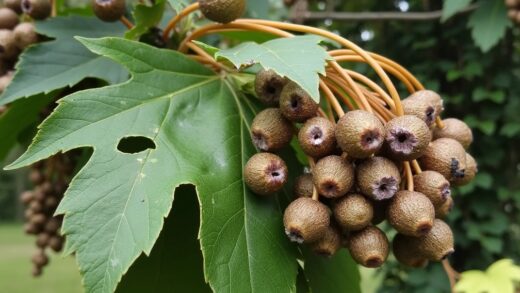Providing the Balkan bellflower with the appropriate nutrition is a key component of its overall care, directly influencing its vigor, foliage density, and the abundance of its blooms. While this is not a particularly heavy-feeding plant, a well-considered fertilization strategy can make the difference between a plant that simply survives and one that truly thrives. It naturally prefers moderately fertile soil, similar to its native rocky habitat, meaning that an overly rich or excessively fertilized environment can be counterproductive. The goal is to supply a balanced diet of essential nutrients that supports steady, healthy growth without forcing lush, soft foliage at the expense of flowers and resilience. Understanding when and what to feed this charming perennial will ensure it has the resources needed to produce its spectacular cascading display year after year.
The fundamental nutritional needs of the Balkan bellflower revolve around the three primary macronutrients: nitrogen (N), phosphorus (P), and potassium (K). Nitrogen is crucial for lush, green foliage growth. Phosphorus plays a vital role in root development and the production of flowers and seeds. Potassium contributes to the overall health and vigor of the plant, enhancing its resistance to diseases, pests, and environmental stresses like drought and cold. A balanced supply of these nutrients is essential. An excess of nitrogen, for example, can lead to rampant leaf growth with very few flowers, which is not the desired outcome for this ornamental plant.
In addition to the macronutrients, the plant also requires a range of micronutrients, albeit in much smaller quantities. These include elements such as iron, magnesium, and calcium, which are essential for various metabolic processes like chlorophyll production and cell wall structure. In most healthy garden soils that are regularly amended with organic matter, micronutrient deficiencies are rare. The regular addition of compost or well-rotted manure not only improves soil structure and moisture retention but also provides a slow and steady release of a broad spectrum of both macro and micronutrients, creating a fertile and healthy growing environment.
The timing of fertilizer application is just as important as the type of fertilizer used. The most critical period for feeding is in the spring, just as the plant is breaking dormancy and beginning its annual cycle of vigorous growth. A single application of a balanced, slow-release fertilizer at this time can provide all the necessary nutrients to support the plant through its main flowering season. This approach mimics the natural nutrient cycles in soil and prevents the boom-and-bust growth that can result from frequent applications of fast-acting liquid feeds. Over-fertilizing, especially later in the season, should be avoided as it can promote tender new growth that is susceptible to frost damage.
Fertilizing at planting time
Creating a nutrient-rich foundation at the time of planting is one of the most effective ways to ensure your Balkan bellflower gets off to a strong start. When preparing the planting hole, it is highly beneficial to incorporate a source of organic matter into the backfill soil. A generous spadeful of well-rotted compost or mature manure is an excellent choice. This not only provides a gentle, slow-release source of a wide range of nutrients but also significantly improves the soil’s structure, aeration, and water-holding capacity, all of which are crucial for the establishment of a healthy root system.
More articles on this topic
In addition to organic matter, you can also add a small amount of a balanced, granular fertilizer to the planting hole. A fertilizer with an N-P-K ratio such as 5-10-5 or 10-10-10 is suitable. The slightly higher middle number (phosphorus) is particularly beneficial at this stage as it specifically encourages robust root development, which is the primary goal for a newly installed plant. It is important to mix the granular fertilizer thoroughly with the soil at the bottom of the hole rather than placing it in direct contact with the plant’s roots, as this can cause them to burn.
Bone meal is another excellent amendment to consider adding at planting time. It is a natural and organic source of phosphorus and calcium, which are vital for strong root growth and sturdy cell walls. A small handful mixed into the soil at the bottom of the planting hole will provide a long-lasting supply of these essential elements, supporting the plant as it establishes itself in its new location. This initial nutritional boost helps the plant to recover from the stress of transplanting and quickly develop the strong root foundation needed for future growth and flowering.
After planting and backfilling the hole with the amended soil, a thorough watering is essential. This not only settles the soil around the roots but also helps to activate the fertilizers and make the nutrients available for the plant to absorb. This initial careful preparation at planting time significantly reduces the need for frequent fertilization later on. By creating a fertile and well-structured root environment from the very beginning, you set the stage for a low-maintenance and highly rewarding plant for years to come.
Ongoing fertilization during the growing season
For an established Balkan bellflower, the need for ongoing fertilization is minimal, especially if it was planted in soil rich in organic matter. This plant is not a heavy feeder and can be sensitive to over-fertilization. A single application of fertilizer in the early spring is typically all that is required for the entire year. As the new growth emerges, you can apply a balanced, slow-release granular fertilizer around the base of the plant, following the manufacturer’s recommended rates. Lightly scratch the granules into the soil surface and water them in well.
More articles on this topic
The type of fertilizer you choose can influence the plant’s performance. A general-purpose, balanced fertilizer (e.g., 10-10-10) is perfectly adequate. Alternatively, you can opt for a fertilizer formulated specifically for flowering perennials, which may have a slightly higher phosphorus and potassium content to promote blooming and overall plant hardiness. Avoid using high-nitrogen fertilizers, such as lawn food, as this will encourage excessive, soft leafy growth at the expense of flowers and can make the plant more susceptible to pests and diseases. The goal is balanced, sturdy growth, not just lush foliage.
An excellent organic alternative to granular fertilizers is to top-dress the soil around the plant with a one- to two-inch layer of compost or well-rotted manure each spring. This practice, often called a “compost mulch,” serves multiple functions. It provides a slow and steady release of essential nutrients and micronutrients throughout the growing season. It also improves the soil’s texture, conserves moisture, and helps to suppress weeds. This single annual application is often sufficient to meet all the nutritional needs of the Balkan bellflower for the year.
If you notice that your plant’s growth is looking lackluster or its flowering is sparse, despite being in good soil and receiving adequate light and water, a mid-season liquid feed might be beneficial. You can use a diluted, water-soluble fertilizer, such as a seaweed extract or a balanced flower feed, and apply it once or twice during the peak growing season. However, this should be seen as a corrective measure rather than a routine practice. In most cases, if the initial soil preparation and spring feeding are done correctly, supplemental feeding during the summer will not be necessary.
Recognizing nutrient deficiencies
While the Balkan bellflower is generally trouble-free, it can occasionally show signs of nutrient deficiencies, particularly if grown in poor, unamended soil. Learning to recognize these symptoms can help you diagnose and correct the problem promptly. The most common sign of a general nutrient deficiency is a lack of vigor, characterized by stunted growth, sparse foliage, and poor flowering. If the plant simply fails to thrive despite proper watering and light conditions, poor nutrition is a likely culprit.
A specific deficiency of nitrogen will manifest as a general yellowing of the leaves, a condition known as chlorosis. This yellowing typically starts with the older, lower leaves on the plant and progresses upwards. This is because nitrogen is a mobile nutrient, meaning the plant can move it from older tissues to support new growth. If you observe this pattern, a light application of a nitrogen-rich fertilizer or a top-dressing of compost can help to correct the issue.
Phosphorus deficiency, while less common, can result in stunted growth and leaves that take on a purplish or reddish tinge. It can also lead to delayed or sparse flowering, as phosphorus is critical for the energy transfer processes involved in bloom production. Adding bone meal or a fertilizer with a higher middle number (P) can remedy a lack of phosphorus in the soil. It is important to note that phosphorus availability is also affected by soil pH, being less available in highly acidic or alkaline soils.
A lack of potassium can lead to a weakening of the plant’s overall structure and resilience. The symptoms often appear as a yellowing or browning along the margins or edges of the older leaves, while the center of the leaf remains green. Potassium is vital for regulating water movement within the plant and for activating enzymes, so a deficiency can make the plant more susceptible to drought stress and disease. Fertilizers rich in potassium or natural sources like wood ash (used sparingly and only on non-alkaline soils) can help to address this imbalance.
Fertilizing plants in containers
Balkan bellflowers grown in containers have different nutritional needs compared to their garden-grown counterparts. The limited volume of soil in a pot means that the available nutrients can be depleted much more quickly. Furthermore, frequent watering, which is necessary for container plants, can leach nutrients out of the potting mix over time. For these reasons, container-grown plants rely entirely on the gardener for a consistent supply of food and will require more regular fertilization to thrive.
When potting up your Balkan bellflower, it is essential to use a high-quality potting mix that contains a slow-release fertilizer. This will provide an initial reservoir of nutrients to support the plant for the first few months. However, this initial charge will eventually be used up. To maintain vigorous growth and continuous flowering throughout the season, you will need to implement a regular feeding schedule starting in the late spring.
A balanced, water-soluble fertilizer applied every two to four weeks is an excellent method for feeding container plants. Dilute the fertilizer to half the strength recommended on the packaging to avoid the risk of burning the roots and to provide a more constant, gentle supply of nutrients. Apply the liquid feed to moist soil to ensure it is absorbed effectively and to prevent root damage. This regular feeding will replenish the nutrients that are consumed by the plant and leached out during watering.
Alternatively, you can use a slow-release granular fertilizer designed for container plants. These products are coated and release their nutrients gradually over a period of several months, activated by temperature and moisture. A single application in the spring after potting can provide all the nutrition the plant needs for the entire growing season. This is a convenient, low-maintenance option for busy gardeners. Regardless of the method you choose, remember to cease fertilizing in the late summer or early autumn to allow the plant to prepare for winter dormancy.


















